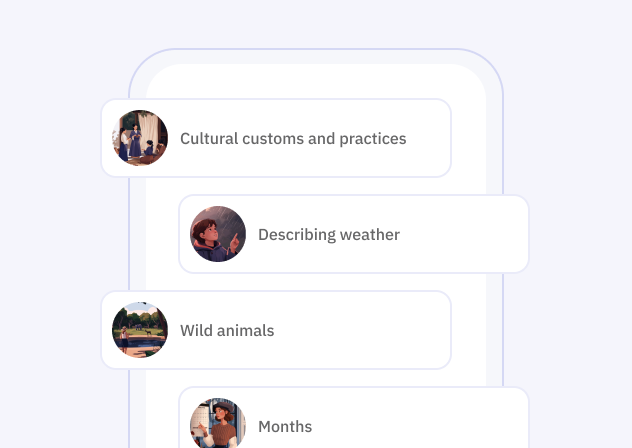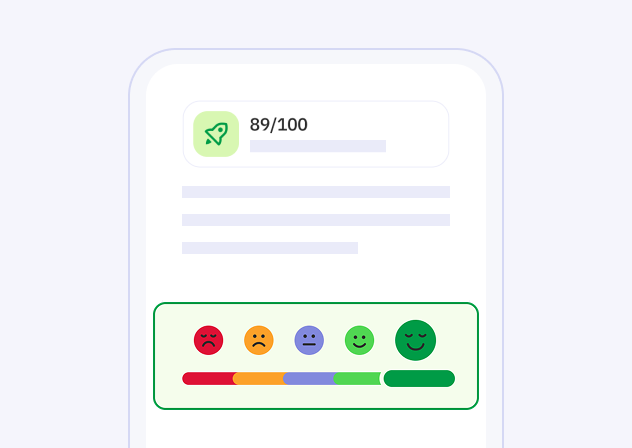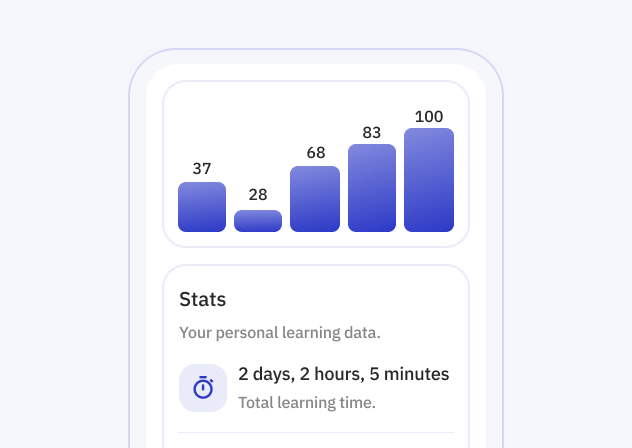To get the most out of AI-powered English learning apps, consider these actionable tips:
-
Set Clear Goals: Define what you want to achieve and use the app in service of that goal. For example, is your goal to improve spoken fluency for everyday conversation, to score higher on a test, or to write better business emails? Having a clear target will help you choose the right app features and stay motivated. Many apps let you set a daily goal (e.g. 10 minutes or one lesson per day) – use these goal-setting features to create a routine. When you know why you’re learning (such as “I want to be able to converse confidently in meetings by June” or “I want 200 new vocabulary words in two months”), you can focus your AI exercises toward that end (e.g. focus on business English module, or do extra vocab drills).
-
Practice Regularly (Consistency is Key): Make language practice a habit by using the app consistently. Short, frequent sessions (even 10-20 minutes a day) are more effective than one long session a week. AI apps are great at encouraging daily use – take advantage of features like streaks or daily reminders. For instance, try to maintain a streak on Duolingo or schedule a daily chat with Talkpal’s AI tutor. Consistency helps reinforce what you learn and moves knowledge from short-term to long-term memory. Treat your AI practice like brushing your teeth – a non-negotiable daily routine. Over time, these little daily practices compound into big improvement.
-
Engage Actively with the Content: Don’t just passively click through exercises – really interact. When using an AI app, take advantage of all its interactive features. For example, when an app offers to listen to your pronunciation, actually speak out loud (in a private space if you’re shy) and try to mimic native speakers. If there’s a chatbot mode, use it to ask questions or even to think in English. Many AI apps allow open-ended input – so instead of giving one-word answers, try forming full sentences or having a longer conversation with the AI. Use the microphone feature to talk instead of typing when possible; this engages your speaking muscles. In lesson exercises, pay attention to corrections: if you get something wrong, read the explanation or ask the AI why (if that feature exists) so you understand your mistake. Essentially, treat the AI tutor as an active conversation partner/teacher: ask it things, respond to its prompts with interest, and challenge yourself. The more mentally engaged you are, the more you will learn.
-
Use Speech Features to Improve Pronunciation: One of the greatest strengths of AI language apps is helping with speaking. Make sure to use the app’s speech recognition or speaking exercises to practice your pronunciation and speaking fluency. For instance, if the app has a “repeat after me” exercise or a dialogue role-play, do it aloud. Don’t worry about sounding silly – the AI is not judging you. If the app provides a pronunciation score or highlights which words you said incorrectly (as ELSA does), take note of those and try them again. You can even mimic the app’s voice playback: many apps have audio for vocabulary – try to imitate the intonation and rhythm of the native speaker audio. Some apps let you record your voice and compare waveform or playback; use these to self-evaluate. Over time, regularly using these speech tools will make your pronunciation more native-like and your speaking confidence will grow. Essentially: talk to your app! The more you practice speaking with the AI, the better your real speaking skills will become.
-
Leverage AI for Writing and Grammar: If you’re looking to improve writing or grammar, use AI tools like Grammarly (or the writing feedback in apps) as learning aids, not just autocorrect. When Grammarly underlines a mistake or suggests a change, read the explanation (Grammarly often tells you why something is wrong) so you learn the rule. Keep a notebook or document for new grammar or vocabulary points you learn from these corrections. You can even intentionally write a few sentences or a short journal entry in English each day and run it through the AI checker – treat the corrections as mini-lessons. Some apps (like Talkpal or Duolingo) allow you to compose answers or even free-write and will correct you – make use of that by writing longer answers. Over time, you’ll start anticipating the AI’s corrections and your first-draft writing will get cleaner. Also try the AI generation features carefully: for example, if you use a chatbot to ask “How do I say X in a formal way?”, study the answer it gives. This way, AI can teach you better phrasing and style. In summary, actively use the AI as your personal editor and learn from each suggestion.
-
Supplement with Other Resources: While AI apps are powerful, don’t rely on them exclusively. Use them as a central tool, but blend your learning with other resources for a well-rounded approach. For instance, if you learn new words in the app, try to read an English article or watch a short video on YouTube to see those words in context. You might use a podcast or English songs to improve listening, then use the app’s vocabulary games to reinforce what you heard. If possible, practice speaking with real people too (language exchange or a tutor) – you’ll notice the gains you made with the AI when you can hold a conversation more easily. Additionally, sometimes consult a grammar book or website if you want a deeper explanation than the app provides. Using multiple sources will ensure you cover any gaps and keep things interesting. Many learners find success by, for example, doing 15 minutes of app practice daily plus journaling a few sentences and having an AI correct them, plus maybe a weekly chat with a friend. Combining AI tools with real-world practice and reference materials will accelerate your progress.
-
Track Your Progress and Stay Motivated: Most AI apps provide stats – like words learned, streak count, skill levels, or quiz scores. Regularly check your progress and celebrate milestones, as this will keep you motivated. For example, if you see you’ve completed 50 consecutive days of practice or mastered 500 new words, give yourself a pat on the back (maybe even reward yourself). These apps often send encouraging messages when you hit a milestone – take a moment to appreciate how far you’ve come. If the app shows weak areas (e.g., “past tense: needs practice”), use that as a clear guide on what to focus on next. Another tip is to periodically use your English in a real scenario to gauge progress – perhaps write an email to a colleague or speak with a native speaker friend. Noticing that you can do this better than before is hugely motivating and reinforces that the app practice is paying off. Some learners keep a journal of their language-learning journey or use social media/forums to share achievements; this can create accountability and community support. Ultimately, consistency plus seeing progress will create a virtuous cycle – the more you see improvement, the more motivated you are to continue, and AI apps are excellent in providing that visible progress tracking.
By following these tips – setting goals, practicing consistently, engaging deeply with the AI, and complementing with other practice – you can maximize the benefits of AI-powered English learning apps. Remember that the app is a tool and you are the driver: the more you put into it, the more you’ll get out. AI has made it easier than ever to immerse yourself in English on your own terms; with dedication and smart usage, you can significantly accelerate your learning and enjoy the process along the way. Happy learning!











